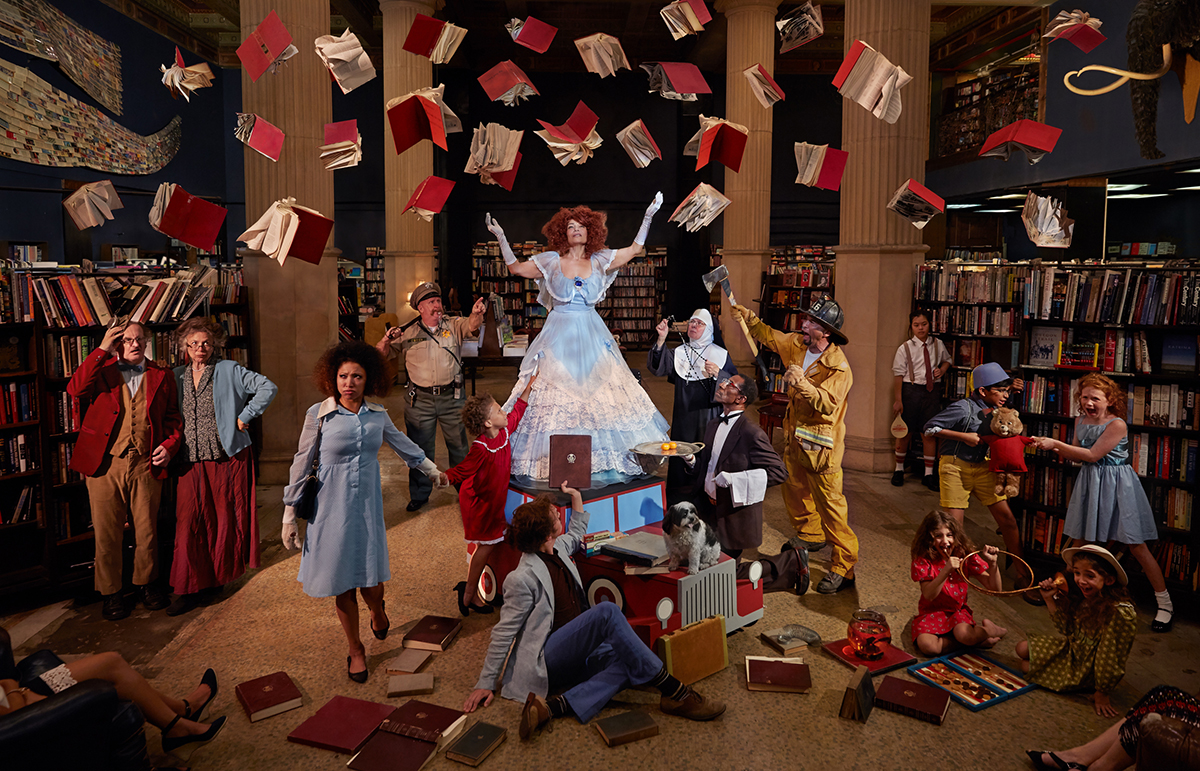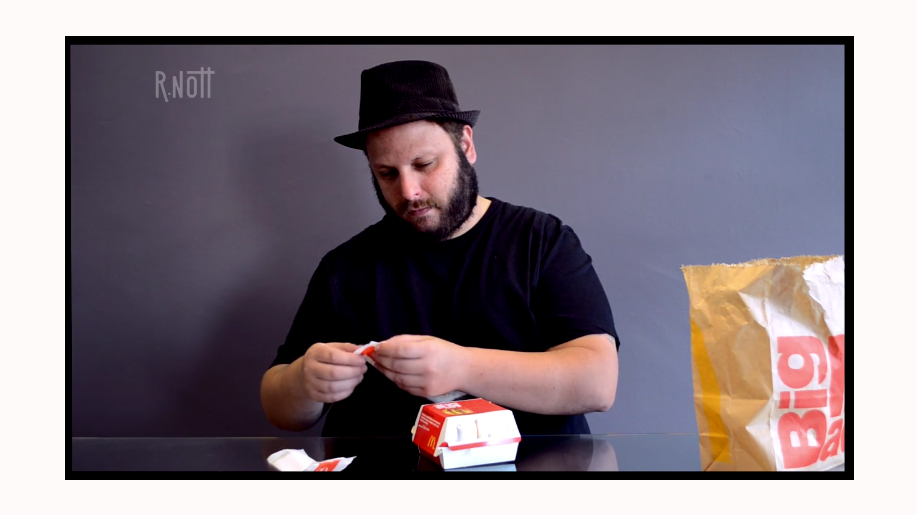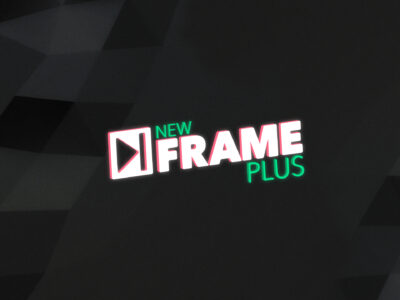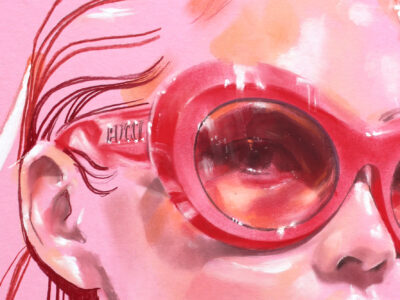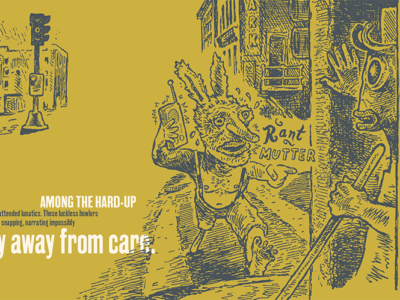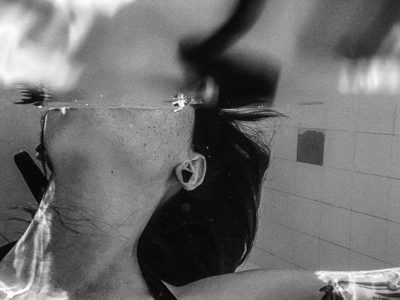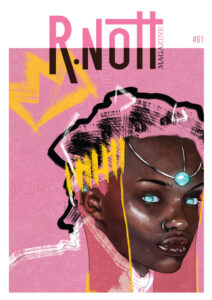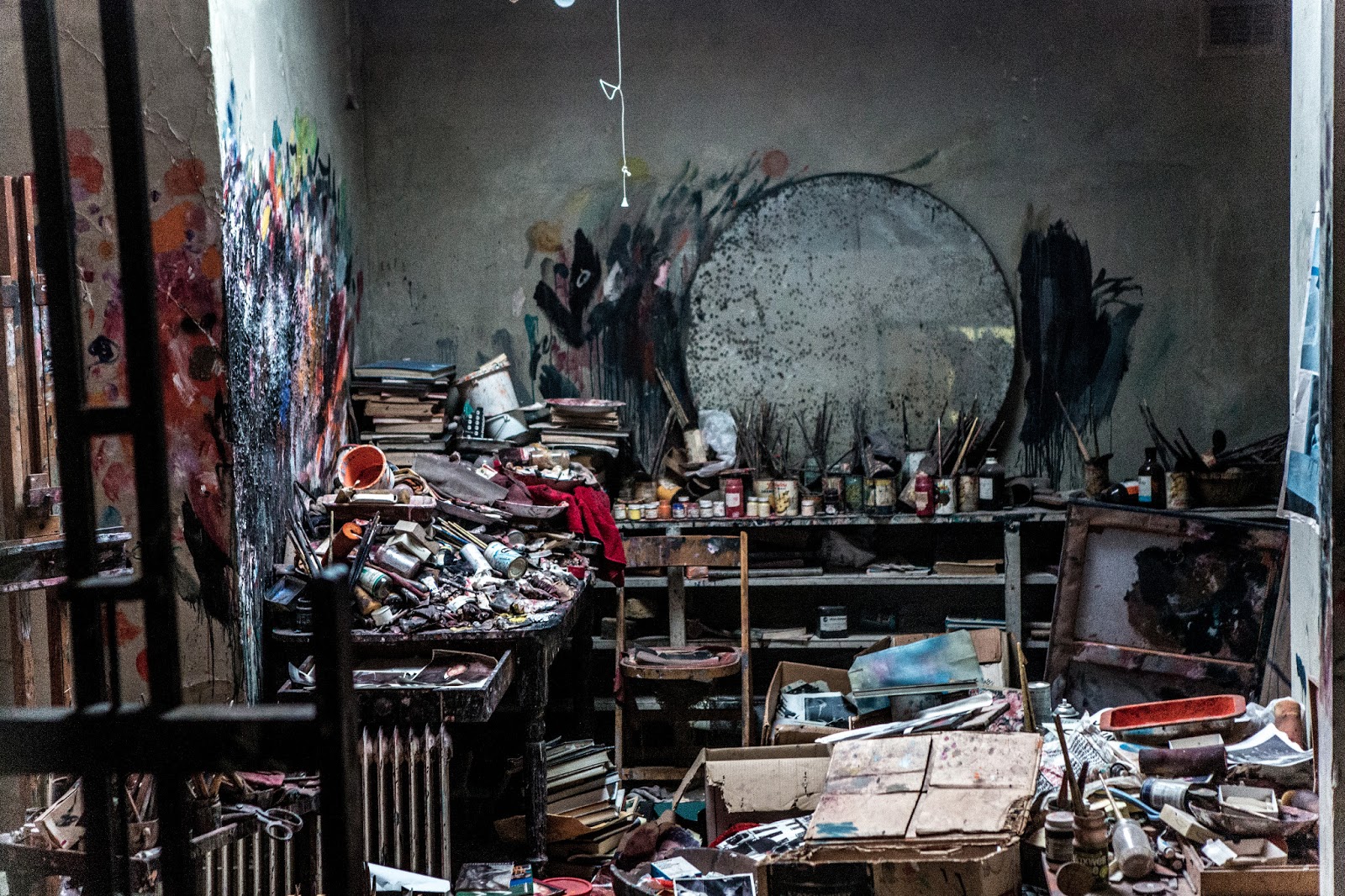[vc_row][vc_column][vc_column_text]Ryan Schude, fotógrafo estadunidense e autor de composições invejáveis, nos concedeu uma entrevista e contou um pouco sobre como constrói seus cenários altamente alegóricos se utilizando de pessoas comuns. Imperdível!
[/vc_column_text][vc_column_text]
“Os elementos individuais na fotografia tendem a ser comuns, ordinários, e se qualquer surrealismo se esgueira para dentro, ele deve vir da interpretação particular do espectador.”
[/vc_column_text][vc_empty_space height=”52px”][/vc_column][/vc_row][vc_row][vc_column][vc_column_text]
♦ Como, onde, quando e por quê.
Eu deixei o San Francisco Art Intitute em 2001, sem saber muito bem onde eu iria focar as minhas energias na fotografia. Certamente isso acontece a muitos, apenas saindo da escola e querendo fazer fotos todos os dias, mas como realizar isso com sucesso? Inicialmente, a noção de fotografia comercial não me agradava, já que o trabalho parecia meio aguado e há maneiras melhores de fazer a vida, se é o que você quer fazer. O mundo das artes, por outro lado, parecia impossível de acessar, especialmente se você está começando e ainda não tem muito o que mostrar. Se eu fosse independentemente rico, não acho que teria sentido a necessidade de entrar em quaisquer desses mundos. Adicione o ‘editorial’ nessa mistura e você terá energias conflitantes dividindo a sua atenção. Parecia que o único jeito de sobreviver era começar a investigar todos esses caminhos ao mesmo tempo, mesmo que fosse só pra ter o que comer e descobrir qual deles seria o meu foco. Bem ou mal, ainda estou ligado aos 3, alguns mais que outros, o que depende dessa noção completamente imprevisível de “artista freelance”. Sei que tudo isso acaba parecendo um pouco vago, mas, sem entrar em detalhes, meu caminho foi muito parecido ao de muitos fotógrafos que conheço, que fui assistente enquanto montava um book até que tivesse trabalho o suficiente para fazer fotos em período integral.[/vc_column_text][/vc_column][/vc_row][vc_row][vc_column][vc_column_text]
♦ Quem são as pessoas que você fotografa?
Várias das pessoas nas cenas de grandes quadros são escolhidas em websites de casting e agências de talentos. Mas esses devem ser apenas uns 50%, os outros são família, amigos, estranhos, e sujeitos de editoriais.
♦ Qual é o seu processo de composição, fotografia e edição?
Geralmente começa com uma locação como uma inspiração arbitrária e estética. O ambiente e os sujeitos passam então a ajudar-se mutuamente nessa construção, e enredos se desenvolvem. Essa pergunta é melhor respondida usando exemplos específicos, já que cada foto envolve o seu próprio processo. Algumas são simples como instantâneas, outras tomam meses de planejamento. Sem pensar na pré-produção, a pós é bastante similar. Ultimamente não tem havido muita composição e o objetivo é o de juntar o máximo possível em um único frame. Quase nunca há algo na imagem que não tenha sido fotografado durante o dia inicial de trabalho.[/vc_column_text][vc_row_inner][vc_column_inner][vc_single_image image=”4914″ img_size=”full” alignment=”center” onclick=”link_image”][/vc_column_inner][/vc_row_inner][/vc_column][/vc_row][vc_row][vc_column][vc_column_text]
♦ Conte um pouco sobre a América que vemos em suas fotos. Existe alguma declaração (statement) sobre a sua própria terra?
Eu não acho que exista um statement consciente sobre a América. Com certeza pode-se ver temas que se desenvolvem e que são, de vez em quando, relevantes às paisagens Americanas, mas vejo isso mais como um subproduto de onde foram feitas, em vez de uma tentativa de comunicar algo em particular sobre este país. Existe um aspecto visual definido da América ao qual eu sou atraído, e que deve ser mais óbvio a pessoas de outros países do que à maioria dos espectadores americanos. Sendo assim, se eu fizesse essas fotos em qualquer outro país, não acho que seriam muito diferentes, a não ser por questões sutis como a arquitetura ou detalhes sociais.
♦ Que tipo de gente encomenda seus próprios retratos? Você tem ideia do porquê o fazem?
Eu não fotografei gente o suficiente que tenha feito encomendas pra poder falar a respeito disso. Os poucos que fotografei com essa intenção precisavam de algum tipo de material promocional para editoriais ou propaganda. Eu amaria receber pedidos de gente interessada em encomendar um retrato para uso pessoal. Isso já acontece um pouquinho numa circunstância especial em torno de um projeto que estou trabalhando agora e que envolve famílias. Fiz uma chamada de casting para fotografar famílias reais em cenários encenados que incorporam um enredo, ao invés de fazer retratos tradicionais e formais. Isso acaba sendo uma mistura de documentário e fotos encenadas, já que trabalhamos juntos para achar uma locação que seja relevante a eles como família real, mas que possa ser usada como narrativa para criar também o seu aspecto ficcional.[/vc_column_text][vc_row_inner][vc_column_inner][vc_single_image image=”4915″ img_size=”full” alignment=”center” onclick=”link_image”][/vc_column_inner][/vc_row_inner][/vc_column][/vc_row][vc_row][vc_column][vc_column_text]
♦ David Bailey disse, “Na fotografia tudo é muito comum; é necessário olhar muito antes que você aprenda a ver o comum.” Fale sobre a sua atmosfera, que está sempre entre o surreal e o comum do cotidiano.
Os elementos individuais na fotografia tendem a ser comuns, ordinários, e se qualquer surrealismo se esgueira para dentro, ele deve vir da interpretação particular do espectador.
♦ Você se vê ligado ao tipo de fotografia feita por David LaChapelle ou Merkley? Sim ou não, e por quê.
Claro, de maneira básica, todo nós fotografamos “fotos encenadas”. Para além disso, eu diria que o assunto e o visual geral de seus trabalhos é muito mais similar entre os dois do que o meu seria ao deles.[/vc_column_text][vc_single_image image=”4916″ img_size=”full” alignment=”center” onclick=”link_image”][vc_single_image image=”4913″ img_size=”full” alignment=”center” onclick=”link_image”][/vc_column][/vc_row][vc_row][vc_column][vc_column_text]
♦ Fale sobre os seus filmes e sobre os veículos. Por sinal, por que o seu trabalho me lembra de Coração Selvagem (Wild at Heart) de David Lynch?
Eu comecei a fotografar retratos de pessoas com seus veículos em 2001, no San Francisco Art Institute, para um curso de câmera em 4×5. Isso foi arquivado até 2006, quando me mudei para Los Angeles, e isso virou uma coisa regular apenas a partir de 2011. Cada foto requere o seu próprio processo, dependendo de quantas variáveis podem haver, como o nível de comprometimento dos próprios sujeitos, a proximidade, a cronometragem, a locação, etc. Se há um sujeito que mora perto de mim e tem vontade de brincar com um envolvimento maior, mais narrativo, aí torno-me mais disposto a desenvolver uma estória particular para ele. Em outras vezes eu apenas cruzei com pessoas na estrada e precisei fazer a foto num tempo de cinco minutos, então estamos limitados com o que é possível para além de um simples retrato documental. Ambos estão bem para mim, e parte da alegria deste projeto é permitir essa liberdade de ordenar o resultado o tanto quanto possível. Eu estou menos preocupado em ver isso como um corpo coeso de produção do que em conhecer pessoas e ver o que podemos gerar juntos dentro desses parâmetros.
Quanto aos motions, foi uma progressão natural. Por enquanto fiz apenas 2 porque faziam sentido para aqueles sujeitos em particular, e porque o projeto em geral é uma mistura de documentário e ficção. É difícil dizer o quão longe em motion isso irá.[/vc_column_text][vc_row_inner][vc_column_inner][vc_single_image image=”4918″ img_size=”full” alignment=”center” onclick=”link_image”][vc_single_image image=”4921″ img_size=”full” alignment=”center” onclick=”link_image”][/vc_column_inner][/vc_row_inner][/vc_column][/vc_row][vc_row][vc_column][vc_column_text]
♦ Que obra de arte você modificaria sem pensar duas vezes?
Todas. Posso olhar qualquer uma e dizer que eu faria diferente se tivesse que fazer de novo.
♦ Quais são as suas principais referências culturais?
Livros, filmes, fotografias, família, amigos, relacionamentos, locações.
♦ Existe algo que você sempre quis responder e nunca te perguntaram? =)
“Se você pudesse ser um animal, qual seria e por quê?”
Um pato, porque podem andar, nadar e voar.
[/vc_column_text][/vc_column][/vc_row][vc_row][vc_column][vc_single_image image=”4917″ img_size=”full” alignment=”center” onclick=”link_image”][vc_single_image image=”4922″ img_size=”full” alignment=”center” onclick=”link_image”][vc_single_image image=”4919″ img_size=”full” alignment=”center” onclick=”link_image”][vc_column_text]
Site oficial:
http://www.ryanschude.com/
[/vc_column_text][vc_row_inner][vc_column_inner][vc_column_text]
English Version
[/vc_column_text][vc_column_text]
♦ How, where, when and why.
I left the San Francisco Art Institute in 2001 without much thought as to where I was going to focus my energies in photography. I am sure this is similar to many just getting out of school who know they want to make pictures everyday, but how would you tangibly accomplish this? At first, the notion of commercial photography was unappealing, the work seemed watered down and there a lot better ways to earn a living if that is your goal. The art world on the other hand, seemed impossible to jump into, especially when you are starting out and don’t have much to show for yourself to begin with. If I was independently wealthy, I don’t think I would have felt the need to enter either of those worlds. Throw editorial into the mix and you have somewhat conflicting energies dividing your attention. It appeared as the only way to survive was to start investigating all those avenues at once, if only to eat and figure out which I actually wanted to focus on. For better and worse, I am still simultaneously involved in all 3, some more than others depending on this completely unpredictable notion of a freelance artist. I know that must all sound pretty vague but without going into the specifics, my path has been pretty similar to many photographers I know, I assisted while building a book until I had enough work to segue into making pictures full time.
♦ Who are the people you photograph?
Many of the people in the larger tableau scenes are chosen from casting websites and talent agencies. They probably only make up about 50% though, others are family, friends, strangers, and editorial subjects.
♦ What is your process of composing, shooting and editing?
It generally starts with a location as an arbitrary, aesthetic inspiration. The environment and subjects then help to build off each other and storylines develop. This question is better answered with using specific examples since each picture has its own process involved. Some are almost as simple as a snapshot, others take months of planning. Regardless of the pre-production, the post is fairly similar. Ultimately there isn’t a lot of compositing and the goal is to get as much in a single frame as possible. There is almost never anything in the image that wasn’t photographed during the initial shoot day.
♦ Tell us a little about the America that we see in your pics. Is there a statement about your own land?
I don’t think there is a conscious statement about America. You can certainly see certain themes develop which are sometimes relevant to an American landscape but that is more of a by product of where they were made than a direct attempt to communicate anything about this country in particular. There is a definite visual aspect of America I am drawn to and probably is more obvious to someone from a different country than most American viewers. That said, if I made these pictures in any other country, I don’t think they would look much different other than subtle architectural or social cues.
♦ What kind of people order commissions of their own portraits? Do you have any idea of why they do it?
I have not shot enough people who commissioned their own portrait to be able to speak to this. The few I have shot for this purpose usually needed some sort of promotional material either for editorial or advertising. I would love to get requests from people interested in commissioning a portrait for personal use. This is already happening a little in a unique circumstance around a project I am currently working on involving families. I have put out a casting call for real families to be photographed in a staged setting which incorporates a storyline instead of a traditional, formal portrait. This ends up being a blend of documentary and staged photography since we work together to find a location that is relevant to them as a real family but use a narrative to also create the fictional aspect to it.
♦ David Bailey said, “In photography everything is so ordinary; it takes a lot of looking before you learn to see the ordinary.” Tell us about your atmosphere, which is always between the surreal and the daily ordinary.
The individual elements in the photograph tend to be ordinary, if any surreality sneaks in it is must come from the viewer’s particular interpretation.
♦ Do you see yourself related to the kind of photography made by David LaChapelle and Merkley? Yes or no, and why.
Sure, in the simplest of terms, we all shoot “staged photos”. Beyond that, I would say the subject matter and overall look of their work is far more similar to each other than mine is to either.
♦ Tell us about the motions and the vehicles. In addition, why does your work remind me of David Lynch’s Wild at Heart?
I started shooting portraits of people with their vehicles in 2001 at the San Francisco Art Institute for a 4×5 view camera course. It got shelved until about 2006 when I moved to L.A. and then only started to become a regular thing between 2011 and now. Each shoot takes on it’s own process depending on many variables such as the level of engagement of the subject themselves, proximity, timing, location, etc. If there is a subject that lives near me and is willing to play around with a more involved, narrative approach, then I am more likely to develop a particular story for them. Other times I’ve merely come across people on a road trip and need to grab a shot in 5 minute’s time, so we are limited with what we can do beyond a simple documentary style portrait. Both are fine by me and part of the joy of this project is allowing this freedom for the experience to dictate the outcome to some extent. I am less concerned with a cohesive body of work than meeting the people and seeing what we can come up with together within those parameters.
As for the motion aspect, it was a natural progression. I’ve only made 2 of them so far because they made sense for those particular subjects but because the overall project is a blend of documentary and fiction, it is hard to say how far into motion it will go.
♦ Which work of art would you modify without thinking twice?
All of them. I can look at each one and say what I would do differently if I were to make it again.
♦ What are your main cultural references?
Books, films, photography, family, friends, relationships, locations.
♦ Is there something you always wanted to answer and nobody ever asked you? =)
“If you could be any animal, what would it be and why?”
A duck, because they can walk, swim, and fly.
Official website:
[/vc_column_text][/vc_column_inner][/vc_row_inner][/vc_column][/vc_row]


